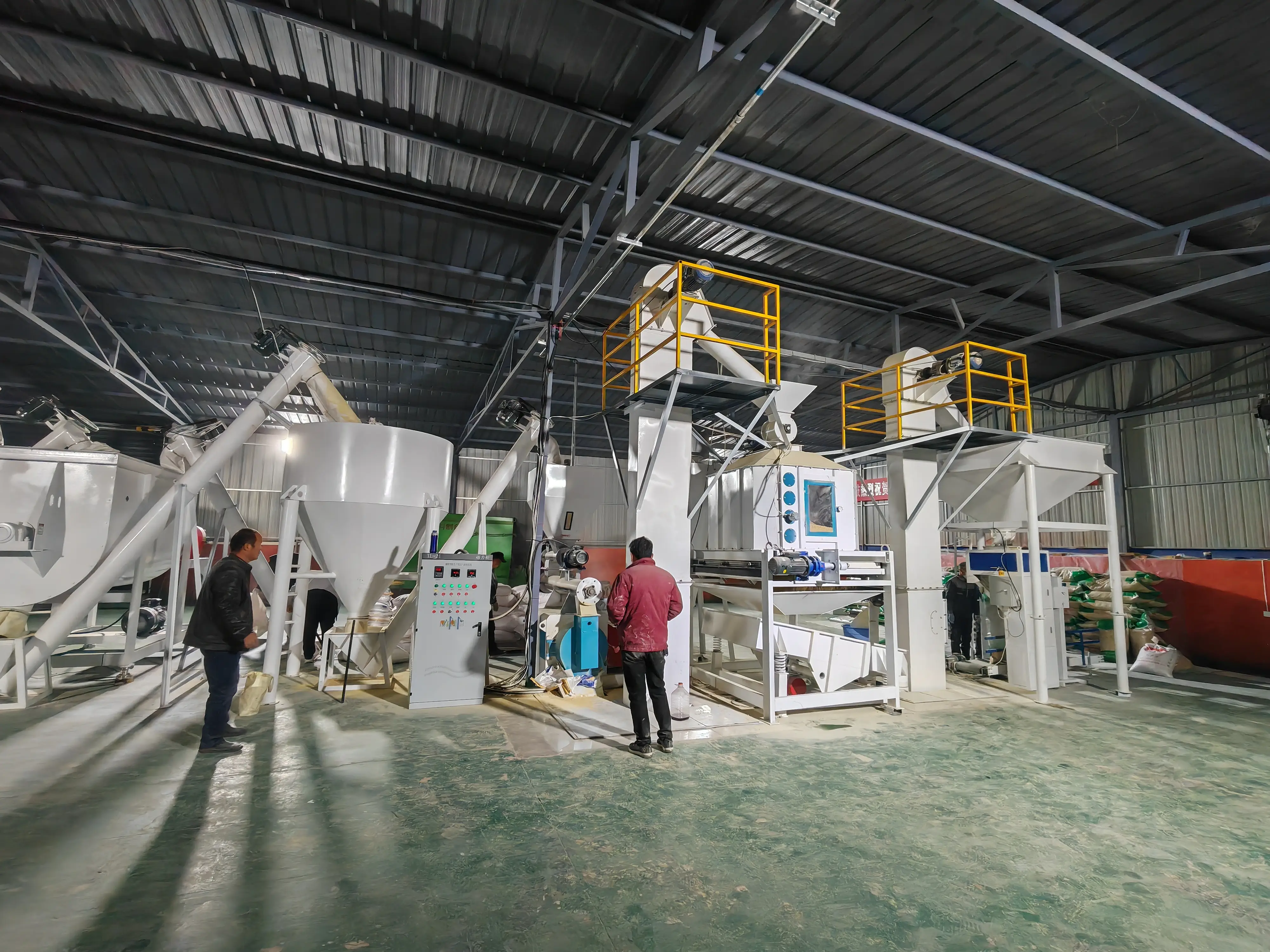Welcome to Rongda Machinery Co., Ltd
Toggle Navigation
Picture this: you’re a farmer trying to keep up with a world that’s hungrier than ever. Feeding livestock or fish isn’t just about tossing grain into a mixer anymore—it’s about precision, efficiency, and keeping things green. That’s where modern feed machines come in, quietly transforming how we produce animal feed. Let’s dive into how these machines are making life easier for feed producers, saving money, and helping the planet, all while keeping the technical stuff—like triple-screw extruders and intelligent micro-pulverizers—front and center.

Gone are the days when feed machines just ground up ingredients and called it a day. Today’s tech is next-level. Take triple-screw extruders, for instance. These bad boys aren’t your grandpa’s twin-screw machines. They can churn out 30% more feed—think 12 tons an hour for fish feed instead of just 9—while using 20% less energy. I heard about a fish farm in China that switched to one of these and couldn’t believe how much faster they were cranking out high-quality pellets.
Then there’s the intelligent micro-pulverizer, which sounds like something out of a sci-fi movie. These machines use IoT sensors and AI to grind ingredients into super-fine, uniform particles—down to microns. Why does that matter? Consistent feed means animals digest it better, and you waste less. Plus, machines like XinXinYuan’s 200-series come with bells and whistles like vibration alerts to catch problems early, cutting downtime and keeping things safe. They’re hitting a 98% yield rate, which is a big leap from older models.
Feed producers are always juggling quality and cost. Upgrading to fancy new equipment sounds pricey, but retrofitting existing machines is a game-changer—sorry, I mean a big deal. For example, a feed mill in Guangzhou swapped out parts of their old dryer for a modular setup. The result? They slashed energy use by 40% (from 280 kg/ton to around 150) and boosted output by 60%, all without breaking the bank on a full replacement.
I love the story of a Chongqing feed producer struggling to make tiny 0.5mm pellets without leaks. They worked with engineers who tweaked their dryer’s mesh plates and airflow for pinpoint moisture control—within 0.5% of the target. That fix saved them over $50,000, proving you don’t always need shiny new gear to get results.
With environmental rules tightening, feed machines are stepping up. New dryers with heat-recovery systems can cut natural gas use by 25%, which is huge for both the planet and your wallet. Smart extruders, meanwhile, use real-time data to minimize waste, ensuring you’re not tossing out perfectly good materials. These upgrades aren’t just about checking boxes for EU or Asian eco-standards—they’re about running a leaner, more profitable operation in the long run.
What’s cool about companies like XinXinYuan is how they’ve got your back, no matter where you are. They’ve set up factories in places like Vietnam and service hubs across Southeast Asia. A fish farmer in Thailand told me they cut their downtime in half and saw a 50% faster return on investment after switching to modular feed production lines. It’s not just about the machines—it’s about the support that keeps them running smoothly.
With the global population racing toward 10 billion, the feed industry has to keep up. We’re talking AI that predicts when your machine might need a tune-up or blockchain to track every bag of feed from factory to farm. It’s not just about staying in the game—it’s about building a food system that’s smarter and tougher.
For anyone in the feed business, teaming up with tech-savvy manufacturers is the way to go. As one old-school farmer put it, “The right machine doesn’t just keep you afloat—it puts you ahead of the pack.”